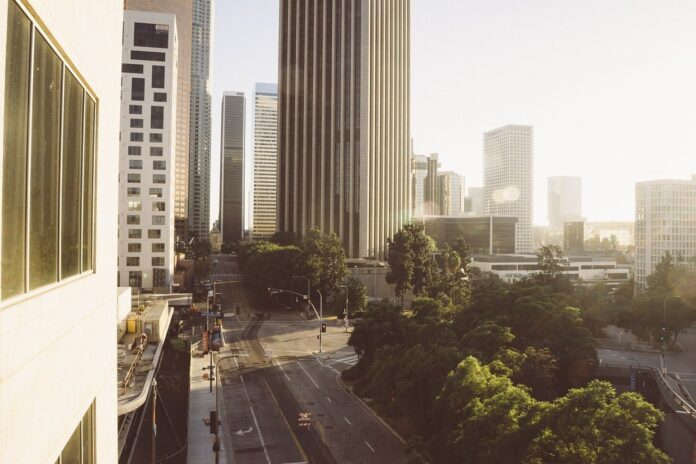Urban forestry is the art, science, and practice of planting, managing, and conserving trees in urban environments for the benefit of current and future generations. Trees in cities, often referred to as the “green lungs,” play a crucial role in enhancing the quality of life for urban residents. They are not merely aesthetic additions but are integral to the ecological and social fabric of urban areas. The presence of trees in cities has been linked to a multitude of benefits, ranging from environmental to psychological.
The concept of urban forestry is not new, but it has gained significant momentum in recent years due to the increasing awareness of climate change and the need for sustainable urban development. Trees in urban areas contribute to biodiversity, provide habitat for wildlife, and form a critical component of urban green infrastructure. As cities continue to expand, the importance of integrating green spaces and trees into urban planning becomes ever more apparent.
Climate Regulation: How Urban Trees Mitigate Environmental Extremes
Urban trees are vital in regulating the microclimate of cities. They act as natural air conditioners, reducing the need for artificial cooling in the summer months. Through the process of transpiration, trees release water vapor into the air, which helps to cool the surrounding environment. This is particularly important in mitigating the urban heat island effect, a phenomenon where urban areas experience higher temperatures than their rural counterparts due to the abundance of heat-absorbing surfaces like concrete and asphalt.
Trees sequester carbon dioxide, a major greenhouse gas, thus contributing to the fight against climate change. A mature tree can absorb an average of 48 pounds of CO2 per year, making urban forests a significant carbon sink. Additionally, trees provide shade that reduces the amount of heat absorbed by buildings and pavements, leading to lower energy consumption for cooling and a reduction in greenhouse gas emissions from power plants.
Breathing Easy: The Impact of Trees on Urban Air Quality
The air-cleansing properties of trees are indispensable in urban settings. Trees act as natural filters, trapping dust, pollutants, and particulate matter on their leaves and bark. This filtration process helps to improve air quality, which is a major concern in densely populated cities where vehicle emissions and industrial activities are prevalent. Studies have shown that trees can remove significant amounts of pollutants such as nitrogen oxides, ozone, and sulfur dioxide from the air.
In addition to filtering pollutants, trees also produce oxygen through photosynthesis. A single mature tree can produce enough oxygen in a season for 10 people to breathe for a year. By improving air quality and providing oxygen, urban trees contribute to the overall health and well-being of city dwellers, potentially reducing the incidence of respiratory diseases and enhancing the quality of life.
A Canopy of Comfort: Trees as Natural Coolants in the Concrete Jungle
The shade provided by trees is a simple yet effective way to combat the heat in urban areas. Tree canopies reduce the amount of solar radiation reaching the ground and buildings, which in turn lowers the temperature of the surrounding air. This natural cooling effect can be quite significant; shaded surfaces may be 20-45 degrees Fahrenheit cooler than the peak temperatures of unshaded materials.
The cooling benefits of trees extend beyond immediate shade. Evapotranspiration, the combined process of evaporation and plant transpiration, contributes to cooling the air as water vapor is released from leaves. This can reduce peak summer temperatures in cities by 2-9 degrees Fahrenheit. The strategic placement of trees in urban landscapes can maximize these cooling effects, leading to more comfortable living environments and reduced reliance on air conditioning.
The Psychological and Social Benefits of Urban Greenery
Trees and green spaces in urban areas are not just beneficial for physical health; they also have profound psychological and social effects. Exposure to nature has been shown to reduce stress, improve mood, and enhance cognitive function. Urban greenery provides a respite from the concrete jungle, offering spaces for relaxation, recreation, and social interaction.
Green spaces can foster a sense of community by providing gathering places for social events, exercise, and leisure. They also contribute to the aesthetic appeal of neighborhoods, which can increase property values and local pride. Furthermore, urban trees can have a calming effect on traffic, reducing road rage and potentially lowering accident rates.
Planting for the Future: Strategies for Enhancing Urban Tree Coverage
To maximize the benefits of urban trees, cities must adopt strategic approaches to planting and maintaining their urban forests. This involves selecting the right tree species for the local environment, considering factors such as climate resilience, growth patterns, and maintenance needs. Urban planners and local governments should integrate tree-lined streets, parks, and green spaces into city designs to ensure that all residents have access to the benefits of urban greenery.
Community involvement is also crucial for the success of urban forestry initiatives. Engaging citizens in tree planting and care fosters a sense of ownership and stewardship over the local environment. Educational programs can raise awareness about the importance of trees and encourage residents to participate in their preservation.
Trees are an essential component of the urban ecosystem, providing numerous benefits that enhance the climate, air quality, and well-being of city residents. As urban areas continue to grow, it is imperative to prioritize the planting and maintenance of urban trees to ensure that our cities remain livable, sustainable, and vibrant for generations to come.
